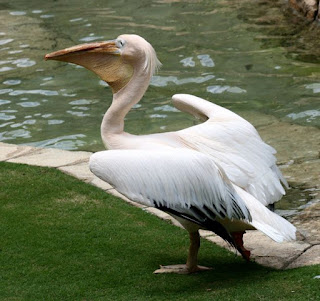 Great White Pelicans breed in Africa, and in Europe and Asia from Greece to Vietman. The world's population is thought to total about 90 000 pairs, of which about 80% are in Africa.
Great White Pelicans breed in Africa, and in Europe and Asia from Greece to Vietman. The world's population is thought to total about 90 000 pairs, of which about 80% are in Africa.
Their diet consists of fish and some crustaceans. I love the way I managed to catch this one skimming along prior to landing in the water.


Great White Pelicans are gregarious birds and large flocks often fish together encircling and trapping shoals of fish in shallow water where all the birds are easily able to scoop up fish in the skin pouch below the bill. They are excellent swimmers and also good fliers.


White Pelicans usually nest in colonies situated on an island, or remote parts of a large pan. The nest is a stick structure placed on the ground.






No comments:
Post a Comment